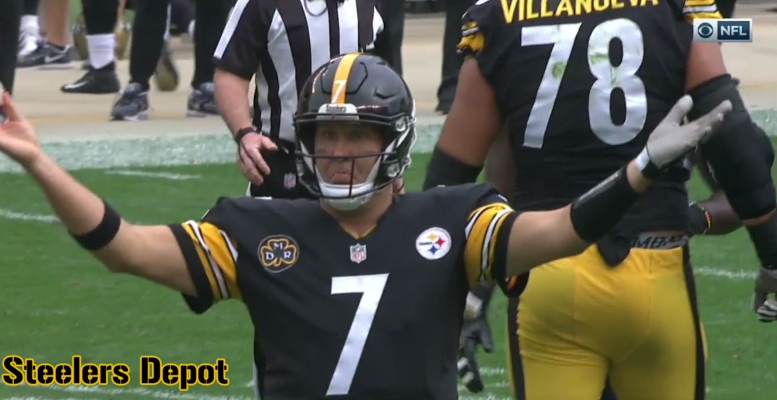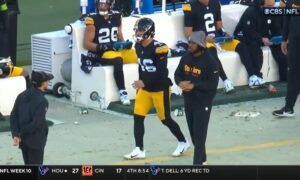During his press conference yesterday, Pittsburgh Steelers Head Coach Mike Tomlin talked about how the game tape from the team’s previous meeting with the Jacksonville Jaguars could only inform their strategy for the rematch so much because both teams had evolved significant since then.
I thought it would be interesting to take a look at how the Steelers have evolved since then, particularly with respect to the offensive side of the ball, which was obviously the bigger issue on the day. The offense only put up nine points of their own while allowing the opposing offense to score 13—including a missed extra point, and you generally don’t want the defense you are facing to put up more points than you do.
Let’s start with the quarterback position. It would be fair to say that at that early part of the season, Ben Roethlisberger was not playing his best football. His accuracy, both globally and in terms of ball placement, was lagging behind where it ought to be, and he was not making great decisions, either.
Now, he is much more recognizable as the elite talent that he has been for most of his career. If you look at just his numbers from the second half of the season, you would think of him as an MVP candidate. His accuracy in particular in both respects has been much better, and he also passes the cliched ‘eye test’.
That doesn’t happen in a vacuum, though. Part of the early inconsistency was due to the inconsistency of his targets. JuJu Smith-Schuster was a 20-year-old rookie who had not yet significantly contributed in the receiving game. Martavis Bryant was still readjusting to the NFL, and to his role, finding himself disgruntled by both. And Vance McDonald had only been around for a short time by that point.
Add in to that the relative recency of Le’Veon Bell’s holdout during the preseason, and the fact that he was not yet up to full speed—nor was the offensive line—and it becomes less and less surprising how different the offense now performs in comparison to that game months ago. They were certainly not in midseason form in game five.
Defensively, the personnel is identical, short of Ryan Shazier, whose absence will have to be accounted for in any game the Steelers play. But Stephon Tuitt is healthier, T.J. Watt is more experienced, and much of the young secondary has gone through the midseason lumps and come out on the other side playing better.
Perhaps the biggest difference is that this is a unit—really, a team—that is playing with much more confidence and assurance as the season has progressed. They have won 10 of their past 11 games since then, and believe that they should have won that 11th game, as well.
Rather than being anxious facing a team that dominated them in the regular season, it is a team that is hungry to show that the first result was a fluke that will not be repeated. And there is good reason to believe that it won’t be, part of that being how the team has evolved since then.








